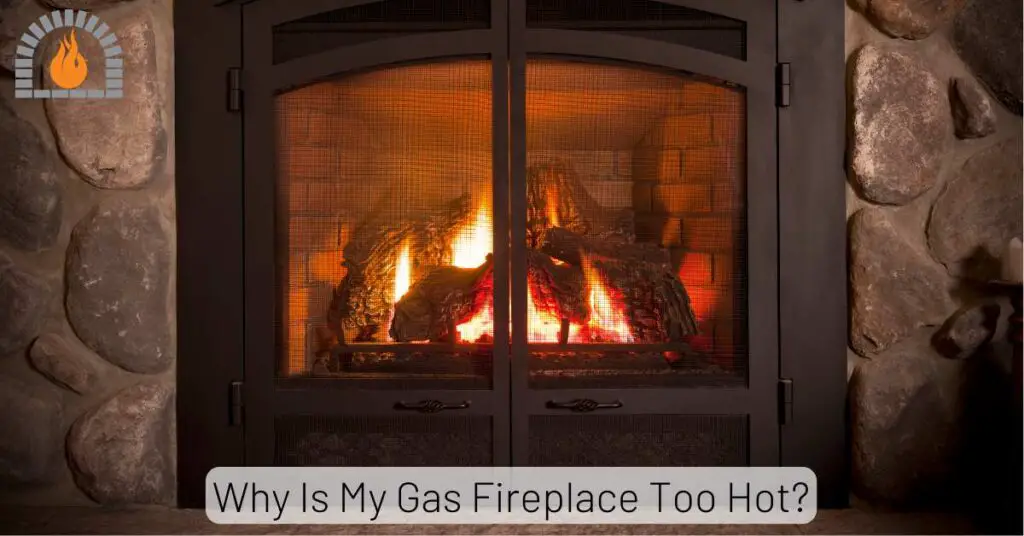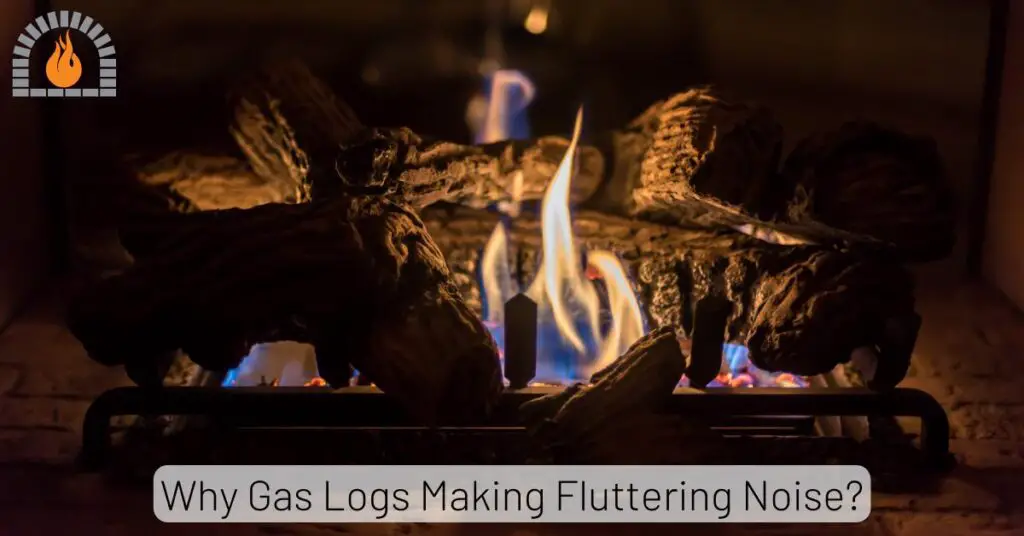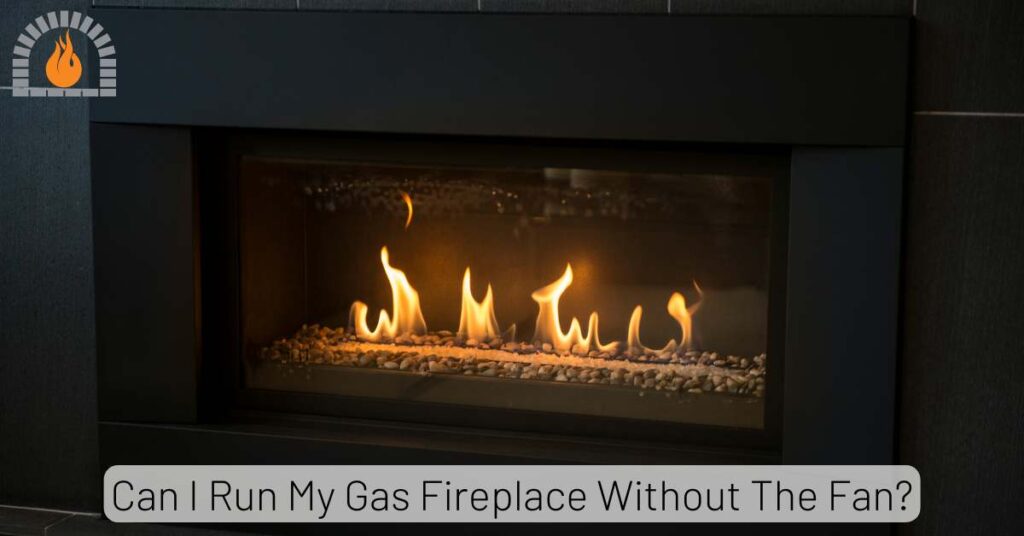Gas fireplaces have gained immense popularity among homeowners as they offer both warmth and a cozy ambience without the inconvenience associated with traditional wood-burning fireplaces. Over time, you may encounter a frustrating issue with your gas fireplace – a white film forming on the glass surface gives it a foggy or cloudy appearance. So, what causes white film on gas fireplace glass?
The primary cause of the white film on gas fireplace glass is the accumulation of mineral deposits. When natural gas or propane burns, it releases by-products like carbon dioxide, sulfur, calcium and water vapors. As the flames touch the cool surface of the glass, the water vapor condenses and evaporates repeatedly during each use. Over time, this cycle of evaporation and condensation leaves behind mineral deposits, resulting in an unsightly white film.
Before we dive into the reasons behind the white film, it’s essential to understand the composition of a gas fireplace. Gas fireplaces utilize natural gas or propane to produce flames, which are contained within a closed combustion chamber.
The glass front acts as a protective barrier, allowing you to enjoy the view of the mesmerizing flames without exposing your living space to harmful emissions.
What Causes White Film On Gas Fireplace Glass?
The white film that forms on the glass of a gas fireplace is typically caused by a mineral buildup, such as sulfur and calcium. This buildup occurs when natural gas is burned in the fireplace, releasing water vapor and small amounts of minerals as byproducts.
When the water vapor comes into contact with the cool glass surface, it condenses and leaves behind the minerals, creating the white film and your gas fireplace glass become foggy.
The main mineral responsible for this buildup is usually calcium, which is commonly found in natural gas and can also be present in the surrounding air.
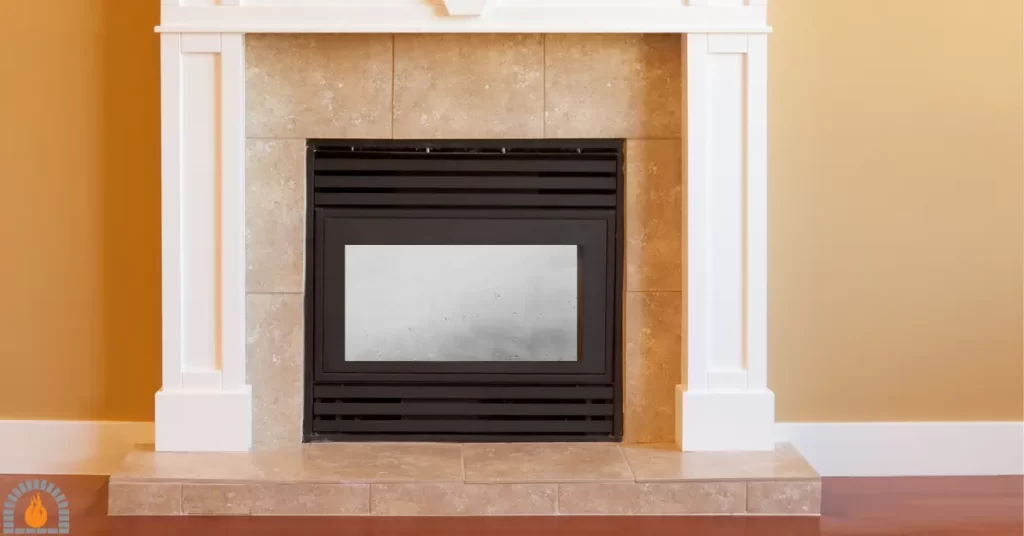
Factors Influencing White Film on Gas Fireplace Glass
Several factors can influence the severity of mineral deposits on your gas fireplace glass:
- Gas Quality: The quality of the gas used can impact the number of impurities present, affecting the formation of mineral deposits.
- Flame Quality: A gas fireplace with a yellow, sooty flame is likelier to produce greater deposits than a clean, blue flame.
- Frequency of Use: The more you use your gas fireplace, the more deposits will build up on the glass surface.
- Humidity Levels: High humidity levels in your living space can contribute to more condensation and mineral deposition.
Preventive Measures for Foggy Fireplace Glass
- While it may not be possible to avoid mineral deposits entirely, you can take proactive steps to minimize their formation:
- Opt for high-quality natural gas or propane to reduce the number of impurities released during combustion.
- A clean, blue flame indicates efficient combustion, reducing by-products and minimal mineral deposits.
- Reduce the frequency of extended use, especially during periods of high humidity.
- Implementing a dehumidifier in your living space can help control excess moisture and minimize condensation.
How to Clean the Cloudy Gas Fireplace Glass?
Cleaning the glass on a gas fireplace is essential to maintain its appearance and ensure optimal performance. Follow these steps to clean the gas fireplace glass safely and effectively:
Note: Before you start, ensure the gas fireplace is completely turned off and cooled down to avoid accidents.
Materials Needed
- Glass cleaner (preferably ammonia-free)
- Soft, lint-free cloth or paper towels
- Warm water
- Mild dish soap
- Vinegar (optional)
Please take a moment to rate our article on “What causes white film on gas fireplaces glass?” in the comment section below. We appreciate your feedback and are open to any related queries you may have.
Step-by-Step Gas Fireplace Glass Cleaning Guide
Remove any debris
Carefully remove any logs or decorative elements inside the fireplace to access the glass properly. Set them aside in a safe place.
Check for venting
Depending on the type of gas fireplace, it may have vents at the bottom or sides. Check for any dirt or debris in these vents and clean them using a vacuum cleaner or a soft brush if necessary.
Prepare the cleaning solution
To create the cleaning solution, take a bucket or container and fill it with warm water. Add a small amount of mild dish soap to the water. Then, gently mix the solution to ensure the soap is well-distributed in the water.
This mild and soapy solution will effectively clean the gas fireplace glass, remove dirt, and leave the glass looking fresh and bright.
Wipe the glass
Dip a soft, lint-free cloth into the cleaning solution. Wring it out well, so it’s damp but not soaking wet. Gently wipe the glass in circular motions to remove any dirt or residue.
Avoid using abrasive materials, as they may scratch the glass.
Focus on stubborn stains
If stubborn stains or soot have accumulated on the glass, an effective solution is to create a paste using water and baking soda. Once the paste is prepared, apply it directly to the stained areas on the glass.
Allow the paste to sit for a few minutes, which helps loosen the tough residues. After the brief waiting period, take a soft cloth and gently scrub the glass, removing the stains and leaving the glass looking clean and clear.
This method is safe for the glass and efficiently tackles persistent marks on the surface. Remember to rinse the glass thoroughly with clean water and dry it afterwards to maintain its pristine appearance.
Rinse with clean water
Once you’ve cleaned the glass thoroughly, take a separate clean cloth or paper towel and dampen it with plain warm water. Wipe the glass again to remove any soap or baking soda residue.
Optional
Vinegar solution: If there are still streaks or stains on the glass, you can create a solution of water and vinegar. Take an equal part of white vinegar and water.
Dampen a cloth with this solution and wipe the glass. The vinegar helps to cut through stubborn residue and leaves the glass shiny.
Dry the glass
Finally, take a dry, lint-free cloth or paper towel and gently dry the glass to prevent water spots or streaks from forming.
Reassemble the fireplace
Once the glass is clean and dry, carefully reassemble the logs and any decorative elements inside the fireplace.
Regular maintenance
To keep the glass, clean for longer, it’s essential to perform regular maintenance. Avoid burning materials that produce excessive soot or smoke, as they can quickly dirty the glass.
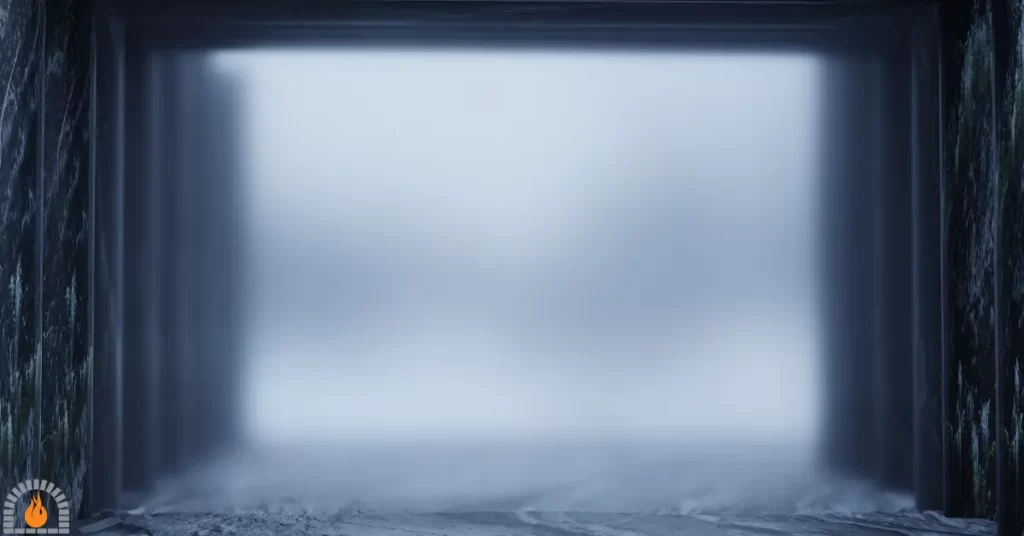
What Not To Use For Cleaning Gas Fireplace Glass?
- Abrasive scrubbers or brushes
- Ammonia-based cleaners
- Harsh chemicals or solvents
- Metal scrapers or knives
- Paper towels or rough cloths
- Vinegar (Non Diluted) or acidic solutions
You May Also Like To Read:
FAQ
What is the white stuff on my fireplace glass?
The white stuff on your fireplace glass is likely a combination of soot and mineral deposits. When you burn wood and other fuels in your fireplace, it releases byproducts like soot and ash. Some particles can adhere to the glass surface, creating a hazy or white appearance.
Why is my fireplace glass cloudy?
The fireplace glass becomes cloudy due to Efflorescence. The fire’s combustion process and heat can cause the soot and other residues to settle on the glass. When the fire is burning, the glass gets exposed to high temperatures, and when it cools down, it may trap condensation, which can also contribute to cloudiness.
What is the white residue on my stone fireplace?
The white residue on your stone fireplace could combine soot and mineral deposits. Burning wood or other materials in the fireplace releases fine particles, some of which may settle on the stone surface. Additionally, mineral deposits can form and contribute to the white residue if you are using hard water or the stone is exposed to moisture.
My Final Thoughts: What Causes White Film On Gas Fireplace Glass?
In Conclusion: The white film on gas fireplace glass is an inevitable consequence of combustion and condensation. However, understanding its root causes and implementing preventive measures can minimize its impact and keep your gas fireplace looking beautiful and inviting.
Regular maintenance and cleaning are key to enjoying the warmth and charm of your gas fireplace for years to come.
Remember to follow safety guidelines and use the right cleaning products for the best results. Happy relaxing by the fire!
Affiliate Disclosure: Fireplaceadviser.com is a participant in the Amazon Services LLC Associates Program. We may earn a commission when you click on certain links on this site and purchase.

Hello!! I am Jamal Khan. I often fix my home electric heaters and gas stove problems and research the common issues in the heating units to improve my knowledge and expertise. The aim of establishing fireplaceadviser.com is to share my expertise and knowledge with my audience.



